
Romania
( 2 user reviews )Romania (România) is a country located north of the Balkan Peninsula on the western shores of the Black Sea. It is a country of great natural beauty and diversity and a rich cultural heritage. Romania enchants visitors with its scenic mountain landscapes and unspoilt rural areas, but also with its historic cities and its busy capital. Over the last decade, it has seen significant development and is one of the most recent members of the European Union. Still, it may surprise some of its visitors who are used to western Europe. Romania is a large country which can sometimes be shocking with contrasts: some cities are truly Western Europe; some villages can seem to have been brought back from the past. While it has significant cultural similarities with other Balkan states, it is regarded as unique due to its strong Latin heritage. Things for which Romania is famous include: the Carpathian mountains, Constantin Brancusi, Mircea Eliade, wine, medieval fortresses, the electronic microscope, Dacia cars, Dracula, insulin, E. M. Cioran, stuffed cabbage leaves, multi-ethnic peace, the jet engine, Nadia Comaneci, the Black Sea, Gheorghe Hagi, sunflower fields, painted monasteries and the Danube Delta.
Know before you go
Visas
Currency
Leu (RON)
Understand
With a Black Sea coast to the east, it is bordered by Bulgaria to the south, Serbia to the southwest, Hungary to the northwest, Moldova to the northeast and Ukraine in both the north and the east. While its southern regions are usually seen as part of Southeastern Europe (Balkans), Transylvania, its largest region is in Central Europe.
The country - which joined the European Union in January 2007 - is currently enjoying its highest living standards since Communist times, with foreign investment on the rise and one of the fastest growing economies in Europe. This has given way to a series of technological developments. Therefore, we can see a fast-changing, booming Romania, and you will be amazed at how civilized, advanced, clean and of quality it is. Of course, along the way, you will be met with experiences that you are sure to remember for a long, long time.
History
In ancient times the territory of present day Romania was inhabited mainly by Dacian tribes, which were a remarkable, although not very well known, culture. The Dacian kingdom reached the height of its power in the 1st century BC, when their king Burebista ruled from his power base in the Carpathian Mountains over a vast territory stretching from Central Europe to the Black Sea. The intriguing network of fortifications and shrines built around the Dacian capital Sarmisegetuza, in today's south-western Transylvania, has been relatively well preserved through the ages and is now a UNESCO World Heritage site.
In 106 AD the Dacians were defeated by the Romans and most of their homeland became part of the Roman Empire. Being very rich in natural resources (especially gold), the region prospered under the Roman administration: cities developed rapidly, important roads were built and people from all over the Empire settled here. That's why, despite the fact that Roman rule lasted less than 200 years, a population with a distinctive Latin character and language emerged, which was however very strongly influenced by the Slavic peoples with whom it later came in contact.
In the Early Middle Ages Hungarians began to settle in the area today known as Transylvania, which would eventually become part of the Kingdom of Hungary. Germans also settled in that area (in several waves), some coming as early as the 12th century. In order to protect themselves from the frequent Tartar and Turkish invasions they set about building fortified cities and castles, many of which remain to this day. South and east of the Carpathians the principalities of Wallachia and Moldavia were created in the 14th century. Starting with the 15th century, both of them (and for a while Transylvania too) fell under the domination of the Ottoman Empire.
A Romanian national revival movement started in Transylvania in the late 1700's and swept across the Carpathians, inspiring the 1859 union of Moldavia and Wallachia, thus creating modern Romania. In 1917-1919 Transylvania and Eastern Moldavia (present day Moldova) were united with Romania.
"Soviet occupation following World War II led to the formation of a Communist "peoples republic" in 1947 and the abdication of the king. Between 1947 and 1965, Romania was led by Gheorghiu Gheorghiu-Dej, who led the country with a pro-Soviet stance throughout most of his administration. In 1965, he was succeeded by Nicolae Ceauşescu who was less enthusiastic towards the Soviet Union and maintained a more neutral foreign and domestic policy than his predecessor while, during the 1980s, the Securitate secret police became a strong force. The leader was overthrown and executed in late 1989."(CIA World Factbook). Former Communists, regrouped around the Front of National Salvation and the Romanian Party for Social Democracy dominated the government until the 1996 elections, when they were swept from power by a fractious coalition of centrist parties but after failed reforms were replaced by the Social Democratic Party. Both groups attempted to amend ties with Hungary, which were deeply fractured in the 1980s, when Ceausescu either encouraged the large Hungarian community to leave the country or exile them outright (5.000 Hungarians left Romania per year). The 2004 elections brought to power an alliance formed by the National Liberal and Democratic parties. They currently govern with the support of most minority parties in Romania. In 2008 Romania held its legislative elections with the right wing party of the PDL (Democratic Liberal Party) won the national elections by a small margin against the PSD (Social Democratic Party). The current Prime Minister is Emil Boc while the Deputy Prime Minister is Dan Nica of the Social Democratic Party.
As of the year 2009 the Romanian Government has decided to implement a massive infrastructure investment programme which will benefit the whole country. The Romanian Government hopes to successfully implement the massive infrastructure program by the end of their mandate in 2012.
When the economic, social and political development is concerned Romania is doing well in comparison to other countries in the Western Balkans region and other surrounding countries in Eastern Europe such as Ukraine and Moldova. However when compared to Western Europe, Romania still has some ways to go to reach that level of development that is enjoyed by the Western Europeans. However Romania's membership in the European Union will help in closing the gap in the years to come.
Regions
- Transylvania - It is the most famous region of Romania, a land of medieval castles and towns, dark forests, snowy peaks (especially those in Transylvanian Alps) At the same time a region experiencing rapid economical development, with modern youthful cities, huge shopping centers, massive infrastructure projects etc.
- Banat - This western-most province is probably the most economically developed in Romania. It has beautiful baroque cities and traditional German villages in the western plains and huge mountain forests in the eastern parts.
- Oltenia - The south-western region, with impressive monasteries, caves and health resorts along the mountains in its northern part and a bizarre desert-like area in the south.
- Bucovina - This north-eastern region is famous for its Painted Monasteries, tucked away between picturesque rolling hills.
- Maramureş - The northern-most region, it's best known for its timeless villages, traditional wooden churches and beautiful mountain landscape.
- Crişana - Located along the border with Hungary, this western region is the entry point for most travelers into Romania, who often neglect its Central-European style cities, numerous medieval sites and resorts on the western side of the Apuseni mountains.
- Dobrogea - A seaside province dotted by ruins of ancient Greek and Roman cities, with various summer resorts along the Black Sea Coast and the unspoiled natural landscape of the Danube Delta in the region's north.
- Moldavia - Certainly one of the most extraordinary regions in Romania, it offers a pleasant blend of historical cities, medieval fortresses, churches, wine and friendly locals.
- Wallachia - Also known as Muntenia. The capital, Bucharest, is in this southern region, as well as the early residences of the Wallachian princes and the mountain resorts on the Prahova Valley. It is also the name of the old kingdom of leaders such as the notorious Vlad Ţepeş (The Impaler).
Cities
-
Bucharest is the capital of Romania.
-
Braşov - located in south-eastern Transylvania, its main attractions are the well kept medieval downtown, the nearby luxury resort of Poiana Braşov and the proximity to Rasnov and the Bran Castle.
-
Sibiu - one of the most beautiful cities in the region, it has the best preserved historical sites in the country, numerous museums and exhibitions, proximity to the stunning Făgăraş mountains, for which reasons it became the 2007 European Capital of Culture.
-
Sighişoara - the city's downtown area, the Sighisoara Citadel, is the last inhabited medieval citadel in Europe and one of the best preserved.
-
Iaşi - the second largest Romanian city, it was the capital of the Moldavian principality until 1861 and briefly capital of Romania. Today it remains one of the major economic and cultural centers in the country.
-
Cluj-Napoca - the largest town in Transylvania, is a major economic center and also a very youthful city, as it has one of the largest universities in Europe.
-
Constanţa - it's Romania's main Black Sea port and one of the major commercial hubs in the region. The northernmost district, Mamaia, is one of the best Black Sea resorts.
-
Suceava - the main city in Bukovina and the medieval capital of Moldavia; it can be used as starting point for visiting the Monasteries in the region.
-
Timişoara - the largest town in the Banat region, it's one of the most prosperous and modernized cities in Romania; it was here that the 1989 Romanian anti-communist revolution began.
Other destinations
-
Gura Humorului - the usual starting point for visiting the monasteries in Bucovina.
-
Tulcea - the starting point for trips to the Danube Delta.
-
Sfântu Gheorghe - the capital of Szeklerland, historical and cultural region
-
Rasnov - a town near Brasov that features an extraordinary fortress.
-
Sinaia, Predeal, Poiana Brasov - ski resorts
The following are some possible itineraries for traveling Romania :
-
Transylvania Triangle Train Tour
-
Maramures and the Mountains Tour
-
Romanian Sampler Tour
Education
The oldest Romanian university is the University of Iasi, founded in 1860 (the medieval schools in Bucharest and Iasi are not considered universities). Bucharest, Iasi and Cluj are considered to be the largest and most prestigious university centres, with newer centres of education like Timisoara, Craiova and Galati emerging as cities with an increasingly larger student population. If coming with a mobility grant (Erasmus/Socrates or similar), it is very important to go to the International Office of the Romanian University as soon as possible, as Romanian paperwork tends to be quite impressive and may take some time to be processed. Also, if planning to study in Romania, it is highly recommended to find your own accommodation - most universities do not provide any accommodation, and if they do provide accommodation, the conditions offered are downright terrible (3-4 persons sharing a room, with a corridor of 50 or more sharing the showers and toilets is not unheard of - this happens since university-offered accommodation is typically next to free (15-20 € per month) for Romanians, and you usually get what you pay for).
The education system is mediocre at best since 1990 (Romania did not do good in either of the PISA evaluations, being in the bottom third of European countries), however reform attempts have been done in the past decade. Attendance is compulsory for 10 years. Universities have started to reduce the number of subsidies so students will, increasingly, have to pay the tuition (tuition is however very low - 500 € per year is the norm). With some exceptions teaching methods in universities are antiquated, with formalism, dictation and memorization as the main tools employed - leading to low quality of many establishments (no Romanian university made it in the Shanghai Index). However, there were very serious reform attempts, with some universities (notably the University of Bucharest, University of Iasi, the Babeş-Bolyai University in Cluj and the University of Timişoara) imposing better teaching standards and interactivity between students and teachers - however much progress is to be done even there. For most subjects, programs are available in Romanian and Hungarian, depending on the university. Some programs are available in English, French and German. Elementary and middle schools are supported by local authorities budget. As with most nations, teachers complain about small salaries. Literacy is nearly universal. According to an EU commission study, about 30% of Romanians speak English (50% in urban environments) and 25% French (40% in urban environments). German is also spoken by about 3-5% of the population (1% having it as their mother tongue).
Contact
Mobile Phones
Mobile phones are ubiquitous in Romania. There are five networks - four GSM/3G (Orange Romania, Vodafone, Cosmote and DigiMobil) and one CDMA (Zapp). Orange and Vodafone have full national coverage (98-99% of the surface of the country), while Cosmote and Zapp are expanding quickly. Fares are average for the European Union (8-30 Eurocent per minute, 4 Eurocent/SMS). Both pre-paid cards and subscriptions are available, and special options for discounted international calls exist with some pricing plans. Roaming is available, but is, like in most of the EU, rather expensive. Pre-paid cards can be bought in almost every shop, either rural or urban.
Internet Access
Internet access is widely available in urban environments, and growing in rural environments. In December 2006 there were about 3.500.000 internet connections, with around 7.000.000-9.000.000 people having internet access. Broadband internet is widely available in cities and towns, through cable, DSL and home-grown, grass-roots small or medium size ISPs offering UTP connections. Speeds are mostly like Western Europe or the US, with 1-4 Mbps downstream for non-metropolitan access being the norm - with prices being around 9-25 € for 1-4 Mbps, with local access significantly faster (10-50 or even 100 Mbps). The speeds are increasing, home access for 4 Mbps being available at around €15 per month.
Internet cafes are available in most towns and cities, and in some villages - but in big cities, their numbers are dropping because of the cheap availability of home access. In rural areas, public Internet access is currently available in 150 villages (in so-called "telecenters"), and it is supposed to increase to at least 500 villages by the end of 2008. In these "telecenters", access is subsidized by the state, and therefore limited. Computers are usually not available in libraries, or in public places such as train stations.
Wireless access is growing, especially in Bucharest, Brasov, Sibiu, Bistriţa, Timişoara and Cluj (the centers are mostly covered), but is still limited, and mainly available in University areas, airports, big public squares, cafes, hotels and restaurants. Payed-for Wi-Fi is also available in other areas. Currently, free wireless hot spots are available in most major cities, usually in the squares near the Town Hall or other important buildings. Most (if not all) McDonald's restaurants in Romania have wi-fi access and so do most 3-star (and higher) hotels.
Mobile internet is available cheaply by all the mobile phone companies. Combined 3G/GPRS/EDGE access is priced at 40-80 RON per month (10-20 Euro)with a cap of 5-10 GB, whereas simple WAP traffic (without a 3G plan) is priced at 10-20 Eurocents/MB.
Cable TV
Cable TV is also very widely available, with about 85% of all households being connected. All hotels providing you with a TV set will provide you with cable TV, since broadcast television is very limited.
Getting there
Getting to Romania is easy from nearly all parts of the world, due to its position, as well as the fact that it is served by an array of transport types and companies.
Entry requirements to Romania in the past few years have been liberalized, and consequently, citizens of the European Union, United States of America, Canada, Japan, Switzerland, Australia and New Zealand can stay up to 90 days with no visa. Nationals from Turkey can stay up to 60 days in Romania, while those of most former-Communist Eastern European countries can stay up to 30 days.
To make sure, check the official visa information provided by the Romanian Ministry of Foreign Affairs before you travel.
If you do need to obtain a visa from outside your own country, try obtaining it from somewhere else beside Budapest, where it can take 3 to 4 days. From Ljubljana the process can sometimes be done in a day because they are not so busy.
By plane
Romania has 17 civilian airports, out of which currently 10 are served by scheduled international flights. The main international airports are:
-
Bucharest's Henri Coanda (Otopeni) Airport is the largest and busiest, it has flights to nearly all the major cities in Europe, to a few Middle Eastern capitals, to all other Romanian cities, but just one direct flight to the USA;
-
The Traian Vuia International Airport in Timisoara is the second largest in the country; it has flights to several large cities in Germany, Italy, Austria, Hungary, Greece, Ukraine as well as to various cities in Romania;
-
Bucharest's Aurel Vlaicu (Baneasa) Airport recently became a major low cost airlines hub;
-
Cluj-Napoca International Airport , as the largest airport in Transylvania it is served by a growing number of flights from various European destinations; Other smaller international airports are located in Arad (flights to Valencia, Verona, Barcelona, Stuttgart, Milan), Sibiu (flights to Vienna, Munich and Stuttgart), Iasi (flights to Vienna), Constanta (various seasonal flights, including one Ryanair flight from Pisa) and Targu-Mures (one daily flight from Budapest).
There are three important Romanian airlines:
-
TAROM, the Romanian flag carrier, based in Bucharest Otopeni
-
Carpatair , based in Timisoara, connects this city with eight Italian and three German destinations, and also has collector/distributor flights to the following Romanian airports: Cluj-Napoca, Bucharest, Constanta, Oradea, Sibiu, Iasi, Suceava, Satu-Mare and Bacau
-
Blue Air, the only Romanian low-cost airline, based in Bucharest Baneasa There are several flights a day from Dusseldorf, Frankfurt, Munich, Vienna and Zurich offered by Austrian, Carpatair, Lufthansa, Swiss and Tarom. Lufthansa opened its flight from Cluj-Napoca to Munich, Germany for only €110. GermanWings opened also from Cluj-Napoca towards Cologne.
In recent times Romania became increasingly attractive for low cost carriers. Blue Air, a Romanian low-fare airline, serves various destinations in Europe from Bucharest (Aurel Vlaicu Airport), Arad, Targu Mures and Bacau. A Hungarian budget airline, Wizzair , introduced direct flights from London Luton to Bucharest in January 2007. Several others, including Wind Jet , MyAir , Sky Europe , AlpiEagles , Ryanair , GermanWings , and AirBerlin ) already operate flights to Romania. Easyjet operates flights from London, Milan and Madrid.
By train
Romania is relatively well connected with the European rail network. There are daily international trains to Munich, Prague, Venice, Vienna, Budapest, Zagreb, Belgrade, Sofia, Thessaloniki, Istanbul, Chişinău, Kiev and Moscow. But due to the poor quality of rail infrastructure in the region train travel on long distances takes considerable time.
Nonetheless, trains are the ideal way of reaching cities in western and central Romania such as Brasov, Sighisoara, Oradea or Cluj-Napoca coming from Central Europe.
International trains to Romania include EuroCity trains which are of a relatively high standard and night trains. Romania is part of the Eurailpass offer.
A cheap way of traveling to or from Romania might be the Balkan Flexipass.
By bus
Even though Romania has not been traditionally seen as a 'bus country', buses are becoming a more and more popular way to reach the country from overseas, especially from the Balkans and the former USSR, but also from Western Europe, e.g. Germany and Switzerland. Even though trains are still the most popular way of getting to Romania from Central Europe, due to good service, train services to the Balkans and former USSR are of a considerably poorer quality and are less frequent (mainly because railway infrastructure in these countries is a lot poorer than Romania's infrastructure). For this reason, a slew of private bus operators now provide quicker and arguably more comfortable coach services to and from cities such as Chişinău, Kiev, Odessa, Sofia and Istanbul.
A general rule of the thumb on whether you should use bus or train is this: if trains are available just as frequently, and at around the same price, and take around the same amount of time, then definitely use them. Otherwise, consider the buses.
For all information about buses in Romania (i.e. timetables and prices) you can use www.Autogari.ro ("Autogari" is the romanian word for bus-stations).
By boat
Cruises on Danube are available, very expensive though, starting from Passau or Vienna and having a final destination in Danube Delta. These cruises will stop in every major port along the road, in Austria, Hungary, Serbia and Romania. There you can travel by rapid boats, fisherman's boats on endless channels to watch huge colonies of pelicans, cranes or small migratory birds. You can enjoy a local dish, fishermen's borsch, prepared using different species of fish, but take care, they use the Danube's river water! It is the only way to travel around the Danube Delta, and the only way to get to the city of Sulina.
There are ferries across the Danube to/from Bulgaria in several ports: from Calafat to Vidin (runs daily), from Bechet to Oryahovo (daily) and from Zimnicea to Svishtov (only on weekends).
By car
You can easily drive into Romania coming from countries in the West, but when coming from the East you will have to drive through Moldova and you may experience troubles there. There is not a direct border crossing between Ukraine and Romania in the south-eastern corner of Romanian Moldavia (Reni/Galati), you must go via Giurgiulesti, which is in Moldova (a small stretch of about 500 meters). Moldovan border control officers will ask several times for money (ecological tax, road tax ... up to 20 € in July 2007). Coming from the north (Ukraine), can also be time-consuming, times can vary from 1 to more than 5 hours.
Also be aware if you plan to drive to Romania, the road infrastructure is undeveloped compared to Western and Central Europe. There are few highways and only in the south of the country. The upside to this is that most european roads which you will mostly be traveling on are denominated with an E followed by a number (e.g. E63), are scenic roads and cross some spectacular scenery of mountains, valleys and forests. The roads especially in Transylvania are built on top of the old medieval routes and there is always something to stop and visit on your way. On the roads linking Romania to its western borders take particular care as there are many trucks and visibility is limited with most roads having one lane for each way, and in most parts are unlit.
Travelling around
Getting around Romania is relatively hard and inefficient for the great distances that have to be covered in this country (this is after all, the second-largest country in Central Europe, after Poland). The transport infrastructure has been improving quite significantly recently, even though roads remain a weak point. There are several highways under construction, but as of yet none are fully operational. Train travel, however, has improved dramatically. Several upgrade projects are under way for several railway tracks and that makes rail traffic on those lines a bit slow for the time being.
By train
The easiest, most comfortable and most rewarding way of traveling between cities is by train. Romania's railway network is one of the largest (the 4th in Europe) and most dense in Europe, with trains servicing every town and city in the country, and the many villages. Usually a train station is no more than 10km from a village, in the vast majority of cases.
Most trains are run by the state carrier, Căile Ferate Române, abbreviated as (SN)CFR . You can get tickets at the railway station or at a CFR agency, which can usually be found in the city center. For trains which require reservations (e.g. InterCity, Rapid) you can get the ticket at the railway station, and are made available 24 hours before the train departs. Tickets for train services on a future day are only available at the CFR agency, and in some larger stations. Additionally, tickets can be bought in the train, but you will end up paying about three times the fare you would have paid in the train station.
In recent years CFR has been leasing an ever increasing number of secondary lines to smaller private railway companies. So far they have the same tariffs as CFR and use mainly second-hand Western European DMU's. The biggest company offering regional services is Regiotrans . For private operators tickets are usually issued in the train.
CFR offers four main types on trains in its route network.
"P" Personal:
Slow trains, stopping in every station on the rail line (including some in the middle of nowhere); extremely cheap. (Bucureşti-Braşov, 166km, 15.5 RON (5 EUR), app. 4 hours, no less than 33 stops). Extremely basic service and sometimes uncomfortable (no seat reservation, no ventilation to speak of, sometimes crowded, no working toilets in some trains, poor lighting). Western Desiro and French Z-type DMUs have been introduced on some routes, including Suceava-Cacica, Craiova-Sibiu, Sibiu-Brasov, Cluj-Teius-Brasov, Cluj-Bistrita, Brasov-Sfantu Gheorghe. Z-type cars provide a more comfortable seating arrangement but a bouncier ride, which is diametrically opposed to Desiro's improvement. Oftentimes these are routes that would be used by people on short distance, so expect to be uncomfortable if traveling for a long period of time, even on these trains, which are often cleaner, but more crowded, than traditional ones.
"A" Accelerat:
Semi-slow trains, often cross-country routes, stopping in all towns, but not villages; cheap, but twice as expensive as Personal; same conditions as P in most cases (but with working lights and toilets). (Bucuresti-Brasov, 166km, 2nd class: 31.3 RON (10 EUR), approx 2 hours 45 minutes, stops in Bucureşti, Ploieşti, Câmpina, Breaza, Sinaia, Buşteni, Azuga, Predeal and Braşov). Newly-renovated cars have been introduced on several routes including Bucuresti- Targu Jiu and Bucuresti-Brasov. However, many consider these cars as uncomfortable, if not more so, than older cars, with just an improved visual element. There is little baggage room and little leg-room compared to 1980's carriages.
"R" Rapid:
Better, more comfortable, faster trains used on trunk routes from Bucharest (few interregional services); more expensive, almost the same speed as Accelerat, but sometimes stop in fewer stations. (Bucuresti-Brasov, 166km, 2nd class: 38.0 RON (12 EUR), approx 2 hours 20 minutes, stops in Bucureşti, Ploieşti, Sinaia and Predeal). Because of restrictions on InterCity transportation on several routes, Rapid trains to Constanta and Brasov have an IC-level service.
"IC" Intercity:
The best of CFR's network; very comfortable, although cheap for Western standards; very clean almost all of the time; same speed as Rapid and Accelerat. (Bucuresti-Brasov, 166km, 2nd class: 41.9 RON (13 EUR), approx 2 hours 20 minutes). All IC trains will offer air conditioning, individual reading lights, dining cars, and some will offer power plugs (both in first and second class). Wi-Fi is provided in some dining cars and in business class (where available). Travelers with large backpacks should note that baggage storage racks on intercity trains are small, and therefore they are likely to find Intercity trains rather less comfortable than Rapide or Accelerat. However, experiences seem to vary depending on the particular train, as in some trains this is true only for non-compartmented cars, so it might be worth trying to get a seat in a compartment. Go to a CFR office in a city, as train stations do not have the facilities to grant such a request.
Other Information about trains
Much of the Romanian railway infrastructure is either being upgraded or modernized. However, due to many obstacles, including lack of available labor, this process is fairly slow, and will probably continue for some years. Bucharest-Constanta and Bucharest-Brasov lines are currently under heavy modernization, and, until such work is completed, trains on these routes will run significantly slower than average (5 hours instead of 2 on Bucuresti-Constanta, 3 hours instead of 2 on Bucuresti-Brasov).
All CFR train services, except the "Personal" trains, which stop at every station and are awfully slow, are of a relatively high quality.
The "Personal" trains stop at every station and are the only option when traveling to small villages. Even though they do make for very original and memorable experiences, they're usually not so comfortable and very slow, albeit very cheap. Most will not offer 1st class. Usually they use 1970s single-suburban or double-decker cars, with 4 seats per row. Many have poor lighting, few toilets (that might also be dirty), and may be crowded.
Accelerat is quite uncomfortable (sharing some rolling stock with Personal), with old, unmodernized cars, albeit somewhat faster than personal. Some personal trains can be dirty, and heating may not work. Do not expect air conditioning in either Accelerat or Personal trains. It is the only service where it is recommended to get a 1st class ticket - 2nd class is usually crowded, and, because of the really long journeys that many trains do, cars and toilets may be really dirty. These trains are currently being modernized, with some (such as the seaside special trains) being given more modern (usually refurbished double-decker cars).
Rapid and Intercity are usually of a high standard - however, some Rapid trains should be avoided because of bad rolling stock (the Bucharest-Belgrade train, Mangalia - Oradea and Mangalia - Baia Mare, using Accelerat-type stock). If you can, use InterCity trains, which connect the hubs in Cluj-Napoca, Timişoara and Bucharest to other major cities. These trains are of a Western European standard and are incredibly clean and modern, with automatic doors, futuristic ecological toilets, air conditioning, ergonomic seats, free newspapers and all the other amenities. Also, they are reasonably cheap and are increasingly used by Romanians (and tourists) on most trips. They are only marginally more expensive than Rapid trains (usually only a few euro cents more expensive). The "Rapid" trains should be your second choice - they stop at more stations, but serve more destinations, and, although being a little bit more traditional, are still comfortable. Rapid carriages are still used on InterCity trains, or, at the very least, were still used 5 years ago at the most. "Accelerat" is a third choice, with little comfort in second class.
If presented with a choice of Intercity trains (Classic or "Săgeata Albastră" - The blue arrow) it is advisable to choose Classic, as these are faster, more comfortable trains. Săgeata Albastră are small 3-car diesel trains with slower service (120 km/h top speed in regards to 160km/h). The difference in price between 1st and 2nd class can be as much as the price of a 2nd class ticket, if not more. However, the difference in comfort is not huge, and it is even possible to get worse seats in 1st class than in 2nd class (this is very common on Rapid trains heading for Iaşi, Botoşani and Suceava).
Sleepers and Couchettes are usually clean, and quite modern, even on Accelerat trains. In winter due to harsh climatic conditions (snow storms) huge delays are possible so avoid traveling by train or at least watch the weather forecast (note that during the snow storms, trains are usually the only way of transport, with roads becoming blocked and airports closing down). In summer the trains and cars can run slower because the rails can be deformed by heat but delays are rather insignificant. The country is investing in upgrading its railways and railway stations.
In some mountain cities the rail fans can travel by a narrow gauge rail train, but these trips are only available for small groups and not for individual tourists (an exception is Valea Vaserului in Maramureş, a scenic mountain railway, which offers trips with a narrow gauge steam train to individual tourists during weekends - note that you may be able to get a ride during the weekdays, but you will either ride in the steam-engine itself, or on the logs in the open carriages, as the line is still in industrial use). Groups can also rent the former Romanian king's personal train or Ceauşescu's private train but these trips are rather expensive. Trains are usually on time, with delays only caused by weather or heavy modernization involving serious infrastructure work such as the one currently in progress on the Bucharest - Constanţa line.
Since the 10th of December 2007, CFR has introduced a new service, Business Class, with two subdivisions: standard and exclusive.
-
Standard has plush armchairs instead of leather, as exclusive does, but is around 20RON cheaper. For the beginning, they only operate on Bucureşti-Craiova-Timişoara and Bucureşti-Braşov-Cluj-Oradea routes. As more rolling stock is introduced, most trunk routes will have this service (Suceava, Iaşi, Constanţa, Arad), although some (Suceava, Constanţa) only standard Business Class.
-
The Business Class service has Personal TV's and Wireless internet access. It is 50% more expensive than regular InterCity services.
If traveling by rail with a rail pass in Romania, it is mandatory to purchase a reservation on all "InterCity", "Rapid" and "Accelerat". While cheap, they are only available starting 60 minutes prior to the departure time.
For up-to-date timetable information on CFR operated lines see CFR's timetable site . For timetables on lines operated by other companies check .
By car
Traveling by car or coach is the easiest way and a vast majority, over 60 percent of foreign tourists use this way of transportation. The steering wheel is on the left and European driver's licenses are recognized by police. For Americans, a passport and valid US driver's license are sufficient for car rental. If you drive your own car, you must purchase a road tax sticker (the "Rovinieta") either from the border or from the nearest gas station. Driving without one will incur a severe fine.
Rentals can be expensive; avoid the major international rental companies, as well as the "friendly" locals who are willing to rent you their own car. In Bucharest and throughout the country rentals start at €20 - €30 per day (without fuel) for a small hatchback, go around 65 - €90 for an average car or lame SUV and may go up to €170 - €200 for a luxury sedan or a luxury SUV. You may be denied renting unless you are 25 or older.
While Romanians are generally friendly and polite, this doesn't apply to their driving style. Speeding is very common, angry drivers are the norm, the accident rates are amongst the highest in the European Union. City roads tend to be heavily overcrowded, particularly in Bucharest. Beware of unpredictable hazards, such as parked cars, pedestrians, sudden braking to avoid a pothole, or stray animals entering the road. Most intercity routes are 2 lane roads, used by everything from horsecarts to communist era trucks to modern sportscars. Romania has almost no modern highways, so plan for longer driving times than in other areas of Europe.
Bucharest is a very dense and crowded city, with narrow, twisting roads, built mainly in the 19th century, with little traffic in mind. Those roads are suffocated by over 1 million cars - it is possible to take 2 hours to drive a distance that could be walked in 20-25 minutes. Navigation is difficult, a GPS or local guide is a necessity. If you need to travel within Bucharest, use the still fairly cheap taxis or the metro.
If you have a good car and you also like speeding be aware that Romanian police have recently bought very modern radars to catch speeding motorists. Speed limits are generally 100 km/h outside of a city and 50 km/h within a village. Some police cars are modern, while others are old Dacia cars. Although rare, some highway patrols have BMW bikes. On major roads, motorists in the opposite direction will sometimes flash their headlights to warn they recently passed a radar trap which may be just ahead of you. Highways and national roads can also be discreetly watched by Police Puma helicopters, produced also in Romania. (Note: Americans will notice Romania has substantially less highway patrol than the US.) Since December 2006, even small offenses are subject to heavy fines by the traffic police (Poliţia Rutieră), they may even take one's driver's license for an irregular passing. Both hidden and visible speed cameras are becoming common on major roads and highways. Policemen sometimes seem to be more lenient with locals, than with foreigners - however, fines are stricter for locals than for foreigners (for locals, as few as two or three minor offenses will get their license suspended for six months). Bribing is a very common way of dealing with the police, but it can be risky especially to a foreigner. As of 2008, bribing is less and less accepted, so for a foreigner it is not recommended to attempt this get-away technique - it can easily land you in jail. The Romanian police are tough on drunk driving - controls are very frequent - and basically any alcohol counts as drunk driving. If you are involved in a car accident while driving and someone is hurt you must stop and wait for the traffic police. Driving away from the scene is considered hit-and-run. Simpler accidents with no injuries can be solved with yourself and all parties involved having to go to a police station and make a statement, but, if in doubt, better phone 112 (Emergency Services) and ask for directions. In most of the cases, after an accident it is mandatory to take a blood test to establish if the drivers had consumed alcohol. Refusal to undergo this test is almost certainly to land you in jail - the punishment is usually more harsh then the one for drunk driving.
Many important roads were once wagon trails which go straight through the center of many villages. Passing while driving is the norm rather than the exception as slow moving trucks, slower moving horse drawn carts, and non-moving herds of cows often frequent the major roads. Travelers joke that if you haven't experienced a possible head-on collision then you haven't been driving in Romania. Road blocks and traffic delays occur frequently.
Types of roads
Motorways (autostrada)
-
A1 - planned to connect Bucharest with cities in southern Transylvania and then proceed to the western border; the only part completed so far is the 110 km long stretch between Bucharest and Piteşti. Arad - Timişoara is under construction, and should be opened by November 2010.
-
A2 - by 2010 is expected to link Bucharest with the Black Sea port of Constanta; for now, out of the total 225 km length, only the Bucharest - Cernavodă segment (about 150 km) is completed. Cernavoda - Constanţa is expected to be completed in early 2010. Although no segment is yet completed the main motorway will be:
-
A3 - is supposed to cross Transylvania diagonally from west to east and then head south to Bucharest. The Bors - Brasov segment, also called the Transylvania Motorway , is currently the largest road project in Europe; it will connect the Hungarian / Romanian border with Oradea, Zalau, Cluj-Napoca, Targu Mures, Sighisoara and Brasov. First two segments should open early 2009. Bucharest-Braşov is also under construction, but the first segment will be completed at the earliest in 2009. The speed limit on motorways is 130 km/h.
Expressways (drum expres)
The only completed expressway is the 60 km long Bucharest - Giurgiu road. It is in the process of upgrading to motorway standard.
The speed limit on expressways is 100 km/h.
National roads (drum national)
In the absence of motorways the national roads remain the most important element of the Romanian transport system, as they connect the main cities in the country. They sometimes have 4 non-separate lanes, but many have only two lanes (a notable example is DN1 Câmpina-Braşov - the 100 km mountain stretch can take 6-7 hours to navigate during weekends. Thanks to recent investments most of them are in reasonable condition, but they are frequently overcrowded and (as they pass through villages and cities) rather slow.
The speed limit on national roads is 100 km/h
Other roads
County (drum judetean) and rural (drum comunal) roads are generally in a poor condition compared with national roads (lack of signs, abundant potholes etc.). Some rural roads are covered with gravel.
The speed limit on these roads is 90 km/h.
Note that for ALL roads, when in a city, town or village, the speed limit is 50 km/h. As such, driving a National Road becomes a constant accelerate-and-brake adventure, one having to be constantly spotting speed limit signs, city limit markers and the behavior of other drivers.
By bus
Bus can be the least expensive method to travel between towns. In the Romanian towns and cities, you can usually find one or several bus terminals (autogara). From there, buses and minibuses depart for the the towns and villages in the nearby area as well as to other cities in the country. You can find timetables on autogari website .
Minibuses are usually very uncomfortable; some buses are old and slow. Schedules are not tightly followed, and delays of over an hour are not uncommon, especially for inter-city buses. Romanian roads are in a rather bad shape, with most of the trunk network being made of one lane per way roads (fairly similar with British rural roads), and only about 250 km of expressway. Most minibuses employed are small, crowded, 14-seat vans (some converted from freight vans), with some longer routes employing 20-seat mini-buses. For commuter and suburban routes, expect an overcrowded van (25 passengers riding a 14 seat van is quite common, with 40 passenger loads not being unheard of), with no air-conditioning, which stops several times in every village. Inter-city bus travel is only slightly better - most vehicles used are also converted vans, or, at best purpose-build minibuses, with only some being air-conditioned. Seating is generally crowded, and in most cases, there is no separate compartment for luggage. Most have no toilets on-board, calling for 30 minutes stops every 2-3h. All in all, the experience of traveling by minibus is quite similar to that of traveling in a Russian or Ukrainian marshrutka.
However, buses are the best solution for a number of routes badly served by the railway network, namely Bucharest - Piteşti - Râmnicu Vâlcea, Bucharest - Alexandria, Bucharest - Giurgiu and Piteşti - Slatina.
The comfort of vehicles is steadily improving, at least in Transylvania along the longer routes serving larger cities. You will find buses from respected companies (such as Normandia or Dacos ) which offer punctual and reasonable, though not always sparkling, conditions, and on which a luggage compartment will always be available. Toilet stops still need to be made, but they happen usually in places where you can also buy food or drinks. Be aware though that on Fridays, Sundays, and close to national holidays such buses tend to be overcrowded, so a reservation by phone might be necessary.
Buses inside the cities are often crowded. This gives pickpockets good opportunities. The pickpocket problem seems to be not essentially worse than in any other European city. Please, pay attention.
By taxi
Taxis are relatively inexpensive in Romania. It costs about €40-Cent (1.4 - 2 leu/RON) per km or slightly more, with the same price for starting. The very low prices make taxis a popular way to travel with both locals and travelers (it can be cheaper than driving your own car) - so during rush hours it may be hard to find a cab (despite Bucharest having almost 10000 cabs).
A notable exception is the Fly Taxi company that operates from the Henri Coanda (Otopeni) Airport. The price for a ride from the airport to the city center can be about €18 (70RON). Either call a taxi by phone to pick you up near the airport or chose the 783 bus line to get into the city. Alternately, you can go to the departure terminal to avoid expensive airport taxis. To do this, after you exit baggage claim, immediately turn right. Literally dozens of taxi operators will approach you and ask if you need a taxi, having marked you as a foreigner (it's their job to do so, after all). Be polite, shake your head no and keep walking. You will pass though about 200 meters of shopping and service areas in a little mini-mall connecting the two terminals, and will then arrive at level two of the departures terminal. Walk out the door and you will see plenty of taxis dropping off passengers. Flag one down and make sure the fare posted on the side is less than 2 RON/km. Technically, they are not supposed to pick up there, but you aren't doing anything wrong by trying, and not many drivers can say no to 30 RON for a trip back to the city center that they were going to make anyway. Just make sure they use the meter.
Be careful to look at the cost posted on the outside of the taxi, and then to look at the meter to see that you are being charged the same fare. Be especially careful in Bucharest, where some taxis post 7.4 instead of 1.4, but the 7 looks very like a 1. Ask if you're not certain - they are obliged to post and clearly state the tariff out front. All taxis MUST have a license - a large, oval metal sign bolted on the sides of the car, featuring the city markings, and a serial number inscribed, usually using large numbers. Do not use any taxi without those markings. Also, do not use a taxi with a license from another city (for example, never use a Ilfov taxi in Bucharest or a Turda taxi in Cluj-Napoca).
The driver may try to cheat you if he sees you are a foreigner. Insist that he will use the meter, or have a Romanian guide with you. Don't negotiate the ride fee in advance, as it may be 2-4 times higher (even more) than the real fee (even if it would seem cheap to you). Check whether it is going in the right direction, follow the way on a map (if you have any!). Do NOT take cabs from the cab stand in railway stations, unless they are from a reputable company and DO NOT take any of the services of those offering you a cab ride in the train station. They may end up being amazingly expensive (up to 50 € for a cab ride that would normally be around 3 €). If you need a taxi from the train station (or airport), order it by phone from a reputable company (see the city pages for the cities you want to visit) - most dispatchers speak some English as do many taxi drivers.
By plane
Air travel is still not very common in Romania even though the national carrier Tarom has dramatically lowered its tariffs on internal flights in late 2006 fearing competition from the newly arrived low-cost airlines.
Tarom serves major cities from Bucharest at least once a day: Timisoara and Cluj-Napoca 4 times daily and Iasi thrice daily, while smaller cities are served less frequently: Sibiu twice daily, Bacau and Suceava 6 times weekly and Oradea, Targu Mures and Baia Mare five times weekly. Normally fares range between about €60 Economy class and €170 Business class, although seats are the same, with few exceptions (the 737's have different Business Class seats, while the ATR's only have different service). But if you book in advance the prices are significantly lower: around €32 (all taxes included) for flights to Bacau, Baia Mare, Iasi, Targu Mures, Oradea, Sibiu, Suceava and around €37 for flights to Timisoara and Cluj. On line booking through the official website, or pay at the airport.
Carpatair also flies internally with a hub in Timisoara, offerin connections from that city to Bucharest and Iasi daily except Sunday, and every second day to Suceava, Craiova and Constanta. As of May 7th 2007, Constanta to Craiova is also operated by Carpatair .
Since February 2008 the low cost airline WizzAir links Cluj-Napoca and Bucharest four times per week at a price of less than €20 (return ticket) if booked in advance.
Note that airports tend to be fairly distant from the cities (for instance Bucharest's Henri Coandă Airport is about 20 km from the city center), so getting from the airports to the cities might be costly if there's no public transport available. Transfer to airports is usually very limited. For example Bucharest Henri Coanda is served by a single express bus line operating from 5:30 AM to 23:30 and taxicabs (around 15-20 €). Check-in usually ends 40-45 minutes before departure.
Hitchhike
Hitchhiking is very common in Romania, and some experienced hitchhikers say it's the easiest country in eastern Europe. Usually, if you are in the right spot, you don't have to wait longer than 5 minutes. During weekends you need a bit more patience. Locals also use this method on a regular basis, especially for shorter distances (up to 50km) and getting to work. Increase your chance to be picked up by using a paper with the city where you want to get to. A good spot is a bus station, road-split, or at the exit of the town (see Hitchhiking Spots Romania). It is a custom to leave some money for the ride (1-2 Ron/10km), but if you are a foreigner you will not be expected to leave money and nobody will get upset. Tell the driver where you want to get in a city, and he will make a detour just to drop you off where it best suits you. Say "Mooltsoomesck" (thank you) at the end. See Hitchhiking Spots Romania.
Talk
The official language of Romania is Romanian, limba română, which is a Romance language and one of the closest contemporary spoken languages to Latin. Aromanian is the closest living relative (and only other member of the Italo-Eastern subdivision of Italic languages) to Romanian. Aromanian is a minority language spoken in Macedonia (where it is one of two official languages), Greece and parts of Romania. In contrast to Romanian's heavy Slavic, German and Hungarian influences, Aromanian takes many words from Greek. Some 10% of the Romanian vocabulary is of Slavonic origin and less than 5% is from Turkish, Hungarian or German. Minority languages spoken in Romania are Hungarian, German, Turkish and Romany (the language of the Roma, or Gypsies), albeit most of these words have fallen out of use for a long time. Russian and Ukrainian can be heard in the Danube Delta as well. French used to be the second well-known language in Romania, since it used to be compulsory in every school; however, it has been mostly displaced by English. A well-educated Romanian who graduated from an average university can usually speak English and another European language, such as French, German, Italian, Spanish (about 8%) or Russian. If you leave the common touristic routes, Romanian is the only way to ask for information. That won't be such a problem; learn some basic words and ask them to write the answers.
Although some might speak Russian due to Romania's past as a part of the Eastern Bloc, one should not count on it. About 7% of Romanians understand Russian but only about 4% are fluent in it. The chance of one doing so is very small, as the Ceauşescu administration and subsequent leaders made learning the language optional, rather than compulsory; and other languages (especially French, Italian or other Romance languages) took the place of Russian in schools.
If you want to find out some common phrases/words in Romanian, see the Romanian phrasebook.
See
Do
Buy
Currency
The national currency of Romania is the leu (plural lei), which, literally translated, also means lion in Romanian. The leu is divided into 100 bani (singular ban). On July 1st 2005, the new leu (code RON) replaced the old leu (code ROL) at a rate of 10000 old lei for one new leu. As of the beginning of 2007, old ROL banknotes and coins are no longer legal tender but can still be exchanged at the National Bank and their affiliated offices.
Coins are issued in 1 (gold), 5 (copper), 10 (silver), and 50 (gold) bani denominations, but 1 ban coins are rare. Banknotes come in denominations of 1 (green), 5 (purple), 10 (red), 50 (yellow), 100 (blue), 200 (brown), and 500 (blue and purple) lei denominations, are made of polymer plastic, and, except for the 200 lei, correspond to a euro banknote in size. However, 200 and 500 lei banknotes are not common.
Romania is relatively cheap by Western standards - one US dollar buys about 3.04 lei and one euro buys about 4.23 lei (exchange rate 06-16-2009) With this, you can buy more in Romania than you can in Western Europe and North America, especially local products. However, be advised that although you can expect food and transport to be inexpensive in Romania, buying import products such as a French perfume, an American pair of sport shoes or a Japanese computer is as expensive as in other parts of the EU. Clothing, wool suits produced in Romanian, shirts, cotton socks, white and red wine bottles, chocolates, salami, a wide range of local cheese, inexpensive leather jackets or expensive and fancy fur coats are possible good buys for foreigners.
When exchanging money, it is extremely advisable to use exchange bureaus or to use cash machines (which will provide ready access to most foreign bank accounts). Absolutely avoid black market transactions with strangers: in the best case scenario, you might come out ahead by a few percentage points, but that rarely happens. Most apparent black marketeers are actually con men of one sort or another, who will either leave you with a bankroll that turns out to be full of worthless Polish zlotys or will simply engage you in conversation for a few minutes, awaiting the arrival of their partners who will pretend to be the police and try to con you into handing over your wallet and papers. (This con game is known as a maradonist.). Exchanging money in the street is also illegal and in the worst case scenario, you might spend a night in jail as well. It is not recommended to exchange money in the airport either - they tend to overcharge on transactions and have very disadvantageous rates - you should use a card and the ATM machine for immediate needs (taxi/bus) and exchange money while in the city.
You should shop around a bit for good exchange rates. Some exchange offices in obvious places (such as the airport) may try to take advantage of the average tourist's lack of information when setting the exchange rate, and it is not advisable to use e.g. airport exchange offices, as the exchange rates may well be quite unrealistic. Prior to leaving for Romania consult the Bank of Romania for a rough estimate of what exchange rates you should expect. Typical exchange offices should not list differences larger than 2-3% from the official exchange rate. Also, when picking an exchange office, make sure it has a visible sign saying "COMMISSION 0%"; Romanian exchange offices typically don't charge an extra commission apart from the difference between the buy and sell rates, and they are also required by law to display a large visible sign stating their commission, so if you don't see such a sign or if they charge something extra, keep going. Choosing a reasonable exchange office, which is not hard to do with the data in this paragraph, can save you as much as 10%, so this is worth observing. Changing money at a bank's exchange office is also a good idea.
Transactions
Romanian transactions generally take place in cash. Although some places will accept Euro or USD you will generally be charged an additional 20% paying by this method and it is not advisable, although this is changing. The best method is to pay using local currency - lei (RON). Most Romanians have either a charge card or a credit card - however, they are generally used at ATM machines - on-line payments are still somewhat new, and many companies and people still look at them with suspicion - so much so, that even on-line shops will make you pay on delivery. You can however pay by card in many shops and in most supermarkets. Accepted credit/debit cards are: Mastercard, Visa , American Express (in some places - although this is rapidly expanding because of a very aggressive campaign by American Express) and Diners Club (usually only in hotels, and even then expect stares and incredulity that such a card even exists). Almost all transactions at POS machines (supermarkets, shops etc.) will ask you to enter your PIN code as well.
Most small towns have at least one or two ATMs and a bank office, with large cities having hundreds of ATMs and bank offices. (It is not uncommon to see three bank agencies one next to another in residential neighborhoods of Bucharest). ATMs are also available in many villages (at the post-office or the local bank-office). Romanian for ATM is bancomat. Credit cards are accepted in large cities, in most hotels, restaurants, hypermarkets, malls. Do not expect to use a credit card at any railway station or at the subway (the subway and RATB of Bucharest, for example, are cash-only because they consider that card transactions would slow down the queues at the ticket booths). Gas stations and a great number of other stores accept Visa and Mastercard. It is advisable to always have a small sum of money in cash (about 50 RON or even more), even in large cities.
Romanian businesses are not mandated to provide you with full change for every transaction, and frequently their tills are short of coins in particular. Fortunately many prices are in round multiples of 1 RON, and they are almost always in multiples of 10 bani. Even if a store can change, say a 100 RON note, they will ask you for smaller change first. For very small amounts (say 20 or 50 bani) they will sometimes insist on you buying something of that worth instead of giving you change.
Prices
Don't expect Romania to be a cheap travel destination! Inflation has struck Romania in many places, and some prices are as high or higher than those in Western Europe, but this is often reserved to luxuries, accommodation, technology, and, to an extent, restaurants. However, food and transport remain relatively cheap (but more expensive than in other countries in her region), as does general shopping, especially in markets and outside the capital, Bucharest. Bucharest, as with every capital in the world, is more expensive than the national norm, particularly in the city centre. In the past 2-3 years, Bucharest has become increasingly expensive, and it is expected to do so for some years.
Supermarkets & convenience stores
The best places to shop for food are farmers' markets. Food sold here is brought fresh from the country, and, by buying it, you are both supporting local farmers and consuming something that it fresh and in the overwhelming majority of the cases natural and organic - in many cases, what you are buying today has been picked freshly yesterday from the countryside. Recently, the food in the markets is sold by intermediaries, who buy cheaply from farmers and sell products, tripling the price. However, this is illegal, and, in many cases, farmers' markets now require that farmers show a specially designed certificate in order to rent a booth.
However, some tourists can't resist Romania's hypermarket temptation, especially in Bucharest. Hypermarkets are a relatively new thing in Romania, but this ensures that nearly all of them are so modern and sparkling clean, with brightly lit aisles, neat shelves and smooth-gliding carts, that you may find it hard to look away and head for the markets! Common hypermarkets are Carrefour , Cora , Kaufland and Real . There are also cash & carry stores like Metro , Selgros , etc.
However, shopping in supermarkets is usually expensive, and not half as fun, as you don't have the chance to haggle. Despite this, all Romanian supermarkets sell products of European quality, and usually make for a very quiet, clean and white shopping experience that can best be likened to duty free shopping in airports at night.
Remember, however, to not confuse supermarkets with ancient food-stores called 'alimentară' - nowadays, 'alimentară' also refers to supermarkets, but there is a difference - supermarkets are usually large and brightly lit, with electronic checkouts and trolleys, while 'alimentara' are dim, old Communist-era shops that are a bit cheaper but a lot less fun to use. These shops, which can best be compared to cornershops, may be your best hope if living in the suburbs or in smaller towns. But, despite their seemingly poorer appearance, they sell good-quality food, and besides, most of them have been renovated anyway to the point that they are still not as aesthetically-pleasing as supermarkets but just as wide-ranging, modern and functional. In 'alimentara', expect strange systems of payment or selection: you may not be able to take items off of the shelf yourself, or one person may tally up your total before another handles the cash, etc. Many locals however actually prefer these establishments, since they offer a personal touch, with many salespeople remembering the preferences of each buyer, and catering specifically for their needs.
Opening hours are extremely predictable and amazingly long. Many shops will have a "non-stop" sign - meaning they are open 24 hours, 7 days a week. Shops that are not open 24 hours are usually open 8 AM - 10/11 PM, with some keeping open in summer until 2 or 3 AM. Supermarkets and Hypermarkets are open 8 AM - 10/11 PM as well, except during some days before Easter and Christmas, when they remain open through the night. Pharmacies and specialized shops are usually open 9 AM - 8/9 PM, sometimes even later while farmers' markets usually open their doors at 7 AM and close at 5 or 6 PM.
The countryside fair
A traditional countryside shopping is the weekly fair (târg, bâlci or obor). Usually held on Sunday, everything that can be sold or bought is available - from live animals being traded amongst farmers (they were the original reason why fairs were opened centuries ago) to clothes, vegetables, and sometimes even second hand cars or tractors. Such fairs are hectic, with haggling going on, with music and dancing events, amusement rides and fast food stalls offering sausages, "mititei" and charcoal-grilled steaks amongst the many buyers and sellers. In certain regions, it is tradition to attend after some important religious event (for example after St. Mary's Day in Oltenia), making them huge community events bringing together thousands of people from nearby villages. Such fairs are amazingly colorful - and for many a taste of how life was centuries ago. One such countryside fair (although definitely NOT in the countryside) is the Obor fair in Bucharest - in an empty space right in the middle of the city, this fair has been going on daily for more than three centuries.
Eat
Romanian food is distinct yet familiar to most people, being a mixture of Oriental, Austrian and French flavours, but it has some unique elements. The local dishes are the delicious sarmale, mamaliga (polenta), bulz (traditional roasted polenta, filled with at least two kinds of cheeses, bacon and sour cream), friptura (steak), salata boef (finely chopped cooked veggies and meat salad, usually topped with mayo and decorated with tomatoes and parsley), zacusca(a yummy, rich salsa-like dip produced in the fall) as well as tocana (a kind of stew), tochitura (an assortment of fried meats, and traditional sausages, in a special sauce, served with polenta and fried eggs), mici (a kind of spicy sausage, but only the meat, without the casings, always cooked on a barbecue). Other dishes include a burger bun with a slice of ham, a slice of cheese and a layer of French fries, ciorba de burta (white sour tripe soup), ciorba taraneasca (a red sour soup, akin to bors without the beet root and using instead fermented wheat bran, with lots of vegetables), Dobrogean or Bulgarian salads (a mix of onions, lettuce, tomatoes, cheese, white sauce and ham), onion salad - diced onion served in a dish, tomato salad - diced tomato with cheese, pig skin - boiled and sometimes in stew, and drob (haggies) - a casserole made from lamb or pork liver and kidneys. Local eclectic dishes include cow tongue, sheep brain (Easter), caviar, chicken and pork liver, pickled green tomatoes and pickled watermelon.
Traditional desserts include pasca (a chocolate or cheese pie produced only after Easter), saratele (salty sticks), pandispan (literally means spanish bread; a cake filled with sour cherries), and cozonac (a special cake bread baked for Christmas or Easter). Bread (without butter) comes with almost every meal and dill is quite common as a flavoring. Garlic is omnipresent, both raw, and in special sauces (mujdei is the traditional sauce, made of garlic, olive oil and spices), as are onions.
Generally, there is good street food, including covrigi (hot pretzels), langoşi (hot dough filled with cheese), gogoşi (donut-like dough, coated with fine sugar), mici (spicy meat patties in the shape of sausages), and excellent pastries (many with names such as merdenele, dobrogene, poale-n brau, ardelenesti), thin pancakes filled with anything from chocolate and jam to bananas and ice cream. Very popular are kebab and shawarma (şaorma), served in many small shops.
Most restaurants in Romania, especially in more regional areas, only serve Romanian food, even though it is similar to Western European food. Especially in Bucharest, there is a wide variety of international food, especially mediterranean, Chinese or French. There are also fairly plentiful international fast food chains. The interesting truth about these is that they are just nominally cheaper than restaurants, with the quality of the food being of an international standard but quite much lower than that served in restaurants. Therefore, go for the restaurants when you can - they provide a much more authentic and quality experience at prices that aren't too much higher.
Vegetarian and vegan travelers can easily find a tasty dish suitable for them if they ask for mancare de post (food suitable for religious fasting). Because Romanians are in their large majority Eastern Orthodox Christians, fasting involves removing of all the animal products from their meals (meat, dairy products or eggs). Even though Lent seasons only cover a small part of the year, you can find fasting food throughout the year. However, note that most of the Romanians are unaccustomed with vegetarianism or veganism; still, you can find fasting food "mancare de post" all year round since most of the Romanians fast also outside Lent, on Wednesdays and Fridays, as part of their orthodox faith.
Drink
Wine
Romania has a long tradition of making wine (more than 2000 years of wine-making are recorded), in fact Romania is the 12th (2005) world producer of wine, the best wineries being Murfatlar, Cotnari, Dragasani, Bohotin, etc. Its quality is very good and the price is reasonably cheap: expect to pay 10-30 RON for a bottle of Romanian wine (about €3 - €8.5). Several people in touristic areas make their own wine and sell it directly. Anywhere you want to buy it, it is sold only in bottles of about 75 cl, so if you want to try it you have to buy the whole bottle.
Beer
Like all the countries with a strong Latin background, Romania has a long and diffused tradition of brewing beer, but nowadays beer is very widespread (even more so than wine) and rather cheap compared to other countries. Avoid beers in plastic PET containers, and go for beers in glass bottles or cans. Most of the international brands are brewed in Romania under a license, so they taste quite different than in Western Europe. Some beers made under licence are still good - Heineken, Pilsner Urquell, Peroni. You can easily realize whether a beer has been brewed in Romania or abroad and then imported simply looking at the price: imported beers are much more expensive than the Romanian ones (A Corona, for example, may be 12 RON while a Timisoreana, Ursus or Bergenbier of a full 1/2 litre size will be 2-4 RON. Some of the common lagers you may find around are quite tasteless, but there are some good brewers. Ursus produces two tasteful beers, its lager is quite good and its dark beer (bere neagra), Ursus Black, is a strong fruity sweet beer, similar to a dark Czech beer. Silva produces bitter beers, both its Silva original pils and its Silva dark leave a bitter aftertaste in your mouth. Bergenbier and Timisoreana are quite good. All the other lager beers you may find, such as Gambrinus, Bucegi or Postavaru are tasteless (in some consumer's opinion).Ciuc is a very decent and affordable pilsner , now owned by Heineken. Expect to pay around 2-3 RON (€0.6-€0.8) for a bottle of beer in the supermarket and sightly more in a pub.
Spirits
The strongest alcohol is palinca, with roughly 60 percent pure alcohol and is traditional to Transylvania, the next is ţuica (a type of brandy made from plums - the more quality, traditional version - but also apricots, wine-making leftovers, or basically anything else - an urban legend even claims you can brew a certain kind of winter jackets (pufoaică) to ţuică), but this is sooner a proof of Romanian humour. Strength of tuica is approximately 40-50 percent. The best ţuică is made from plums, and is traditional to the Pitesti area. Strong alcohol is quite cheap, with a bottle of vodka starting off between 10 RON and 50 RON. A Transylvanian speciality is the 75 percent blueberry and sweet cherry palinca (palincă întoarsă de cireşe negre) - but is usually kept by locals for celebrations, and may be hard to find.
Sleep
Finding an accommodation in Romania is very easy, for any price. In all the touristic places, as soon as you get to the train station several people will come to you asking whether you need an accommodation, or you can book it in advance. Those people welcoming you at the station often speak English, French and Italian. Moreover, while walking on the street, you will often find cazare on the houses, that means they will rent you a room in their own house. You'd better book an accommodation in the big cities (Bucharest, Cluj-Napoca, Brasov and Iasi), since it'll be quite hard to wander around looking for a place to sleep, but anywhere else you won't find any problem at all.
Rural tourism is relatively well developed in Romania. There is a national association of rural guesthouses owners, ANTREC who offer accommodations in over 900 localities throughout the country.
Stay safe
Emergency phone numbers
Romania uses the pan-European standard number 112 for all emergency calls since December 2004. Therefore, this is the only number you will need to remember for police, ambulance and the fire department.
Petty Crime
Romania is quite safe, with very little violent crime. Pickpocketing and scams (such as taxi scams or confidence tricks) are present on a wider scale, so exert care especially in crowded places (such as train stations, urban public transport).
Wild Animals
Romania has a very large population of wild animals, including one of the largest population of wild bears in the world. It is commonplace for bears to visit city neighborhoods situated near mountain forests in search for food (such as in Braşov). As such, spotting a bear or wolf is fairly easy. Although usually not dangerous, such animals may become aggressive if care is not taken. If you spot a bear or wolf when hiking, it is advisable to slowly turn around and slowly walk the other way. Local shepherds advise people who are wild camping to camp out in the open rather than under trees where possible to avoid the bears. Under any circumstances, do not attempt to run or try to feed the animal, as it may become disoriented and attack. In 2006, 6 persons have been killed by wild animals in Romania.
Feral animals such as stray dogs may additionally pose a problem in Bucharest, where they are widespread. Most will not be aggressive, and many are taken care of by people from nearby housing blocks. The number of stray dogs is declining but is still extremely high.
Corruption
Some visitors may encounter corrupt policemen (Poliţisti) and customs officials (Ofiţeri de vamă) first hand, even though this seems to be a declining problem. While it may be tempting to pay a bribe (mită or şpagă) to smooth things along on your visit, you should avoid doing so as it only contributes to this problem. It is also illegal to give bribe as well as it is to receive it. Foreigners might receive tougher sentences in Romania.
A piece of good advice for when you find yourself in the situation to be asked to pay a bribe (or just suggested) is to politely reject the proposal, stating clearly that you would not do that. If you are being harassed adopt a swift and determined attitude, and threaten that you will immediately call the police. This will almost surely make whoever is asking for the bribe stop and leave you alone.
Stay healthy
Healthcare
Conditions in Romanian hospitals may vary from the very clean and sparkling, with all the latest technological utilities, to the downright drab, dark and cold. Some hospitals, however, may be, as aforementioned, uncomfortable, with dimness, temperature problems (hot in summer, cold in winter) and outdated equipment, although medical staff are usually experienced. You won't usually face problems such as significant lack of cleanliness.
Remember that your travel health insurance might prove to be insufficient if the medical condition is severe. In this cases, you will be asked to pay for the medical services, and prices are not very low compared to Western Europe. Update: As of January 1st, 2007 and Romania's accession to the European Union, citizens of the European Union are covered by Romania's National Healthcare System as long as they carry an Eurocard(or European Health Insurance Card), obtainable from their own national healthcare authority. (Valid for all EU countries)
Dental procedures in Romania, especially those in private clinics, are of an excellent quality. In fact, many Western Europeans come to Romania to have their teeth done for the quarter of the price they pay in their home country. Quality is particularly high in clinics in Transylvania and Bucharest.
Etiquette
Romanians are quite hospitable. In the countryside and small towns, they welcome foreign tourists and, occasionally, they might even invite you for a lunch. As is common in the Balkans, Romanians will insist when offering something, as "no" doesn't always mean "no," they just think it's polite for you to refuse, and polite for them to insist. Don't worry unnecessarily, but still you should take some normal precautions to study your host first. It is common for friends and family to kiss both cheeks upon greeting or parting. Respect towards elderly is highly appreciated and is a good representation of your character. The phrases used to greet friends and strangers alike is "Bună ziua" (Boo-nah Zee-wah) which means "Good afternoon" or "Good day."
If visiting churches or monasteries, try at the very least to wear clothing that covers your full torso and extends to cover your shoulders and knees (sometimes if you do not you will be forced to put on a cloak or wrap skirt). Ideally you wear full length skirts or trousers. Orthodox women will have scarves to cover their hair inside churches but this is generally not expected of tourist women. Obviously you should behave in a quiet respectful manner inside religious buildings.
At beaches, men wear either speedos or shorts, with the former more common amongst the over 40s, and the latter more popular with the younger crowd. Ladies tend to wear thong bikinis, topless sunbathing is becoming more and more popular.
Bessarabia and Northern Bucovina are sensitive subjects to talk about; Romanians consider both Northern Bukovina, Southern Bessarabia and the Moldova republic as Romanian. DO NOT say otherwise, or do not say that a "Moldovan" language exists; Romanians find it extremely offensive.
The Iron Guard and Marshal Antonescu are regarded as heroes by some Romanians. Officially, they are not "legal" as they promote fascism, but this will rarely be enforced in law, unless it's some important person (like a politician) doing a pro-statement in the media.
Refrain from observations, whether by ignorance or indifference, that Romanian is a Slavic language or even related to Hungarian, Turkish or Albanian. They will find it extremely offensive; in fact, as it was already mentioned, Romanians do not pronounce vowels and consonants the same way as any of their Balkan neighbours.
Romanians also don't appreciate when foreigners assume incorrectly that Romania was part of either the Russian Empire or the Soviet Union-- both definitely false-- although it was a member of the Eastern Bloc. Also, while the principalities of Wallachia and Moldova did inded pay tributary sums to the Turks for several centuries, they were never part of the Ottoman Empire, unlike all of their Balkan neighbours. Knowing even these basic facts about Romanian history (and knowing to avoid the popular misconceptions) will go a long way should any conversation on the subject arise. And although Transylvania has been a part of the Austro-Hungarian empire, the population is overwhelmingly Romanian. Avoid this discussion as much as possible as there are still historic ethnic animosities between the Romanians and Hungarians, most recently amplified because of the will of the ethnic Hungarians to secede from the rest of the country. Romanians have been very tolerant to other people and other religions throughout their history and the testimony of this still exists today, if you look to the black sea region where tatars, turks, ukrainians still live today, and also in the west of the country there are lively minorities of serbs, slovaks, germans etc. Jews, Christians and Muslims have lived in peace for many generations, although the country is overwhelmingly Christian Orthodox.
Another very offensive misconception, is making no difference between the Romanian population and the Rroma people or gypsies. Romanians are a different ethnic group from them.
Contact & location
2 Reviews
I liked
I love Romania. all the little gems, the wonderful people. the small villages and local traditions.I disliked
Bucharest. It really does not represent Romania. To see Romania properly, one must venture out. Go to Sighisoara. Or Maramures, or up in the mountains, or drive the Transfagarasan.Add your review
The photos displayed on this page are the property of one of the following authors:
name_393, name_125, name_942, name_106, Bogdan Stanescu
Some photos courtesy of:
 . The photos provided by Flickr are under the copyright of their owners.
. The photos provided by Flickr are under the copyright of their owners.
This travel guide also includes text from Wikitravel articles, all available at  View full credits
View full credits
Stefan Ertmann, Kate Levina, Cristi, Peter Fitzgerald, Jim Nicholson, Ken Peterson, Ryan Holliday, М.А.С Папарожски, Buceceanu Robert-Alin, Mike, Jani Patokallio, Sergey Kudryavtsev, d_nassau@hotmail.com, David, Cristina Domnisoru, Cristi, Todd VerBeek, Alexandru Petrescu, Mike Sharp, Thomas Waltz, Stacy Hall, Gerard, Marko M., Evan Prodromou, Michele Ann Jenkins, Ricardo, Andrew Haggard, Phil Nuttall, Alessio Damato, Colin Jensen, Anurag Shekhar, David Bucur, Yann Forget and Peter Donaghy, Wikitravel user(s) ChubbyWimbus, Pryde 01, Inas, Tatatabot, Eiland, Vidimian, Texugo, Vikkis, Xanthar, Deni120, Axi, Robertb, Hypatia, Strapontin, Riki, Calbookaddict, Episteme, TheSentinel, Jake73, Jonboy, Danielsavoiu, InterLangBot, Codica, Nikai, Wojsyl, Bijee, PierreAbbat, Nzpcmad, Surfer97301, Huttite, Ronline, Nils, Masi27185, Jmabel, Gutza, Dan and CIAWorldFactbook2002 and Anonymous user(s) of Wikitravel
This travel guide also includes text from Wikipedia articles, all available at  View full credits
View full credits
Bogdan
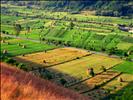
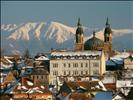


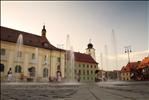






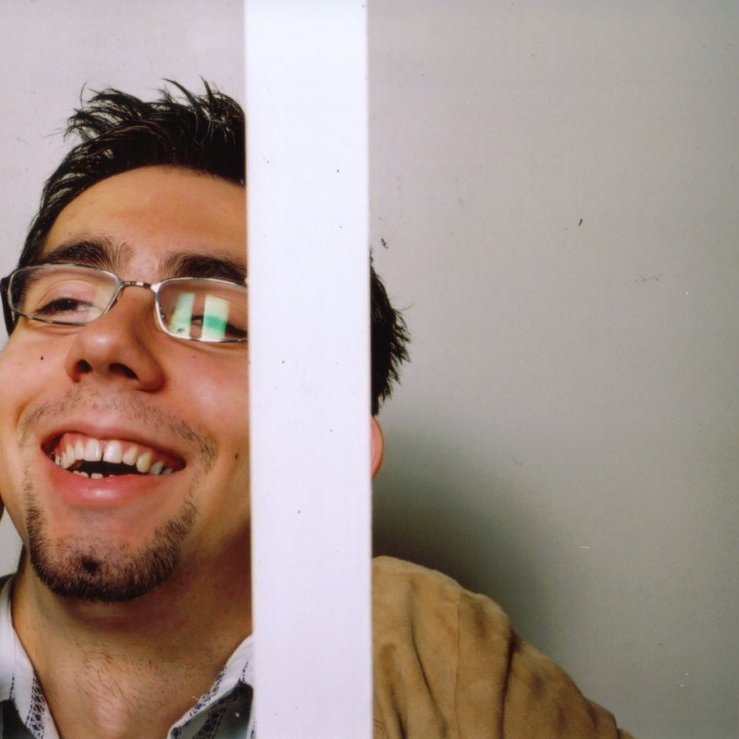
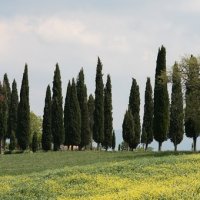


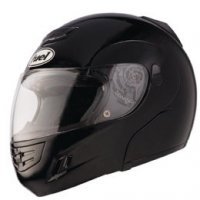








































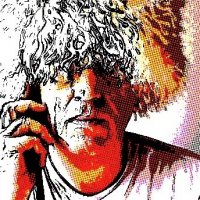






































.jpg)






























































































































































































































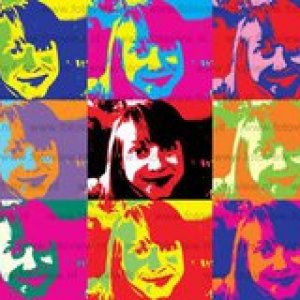







































I liked
I Love Romania. It's still the land of opportunities!I disliked
Nothing